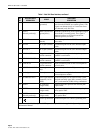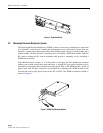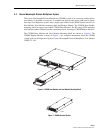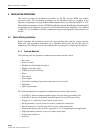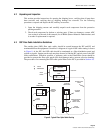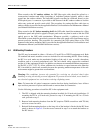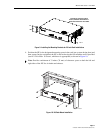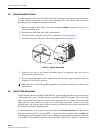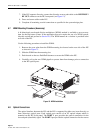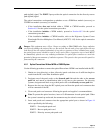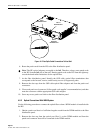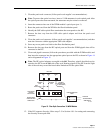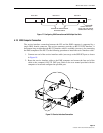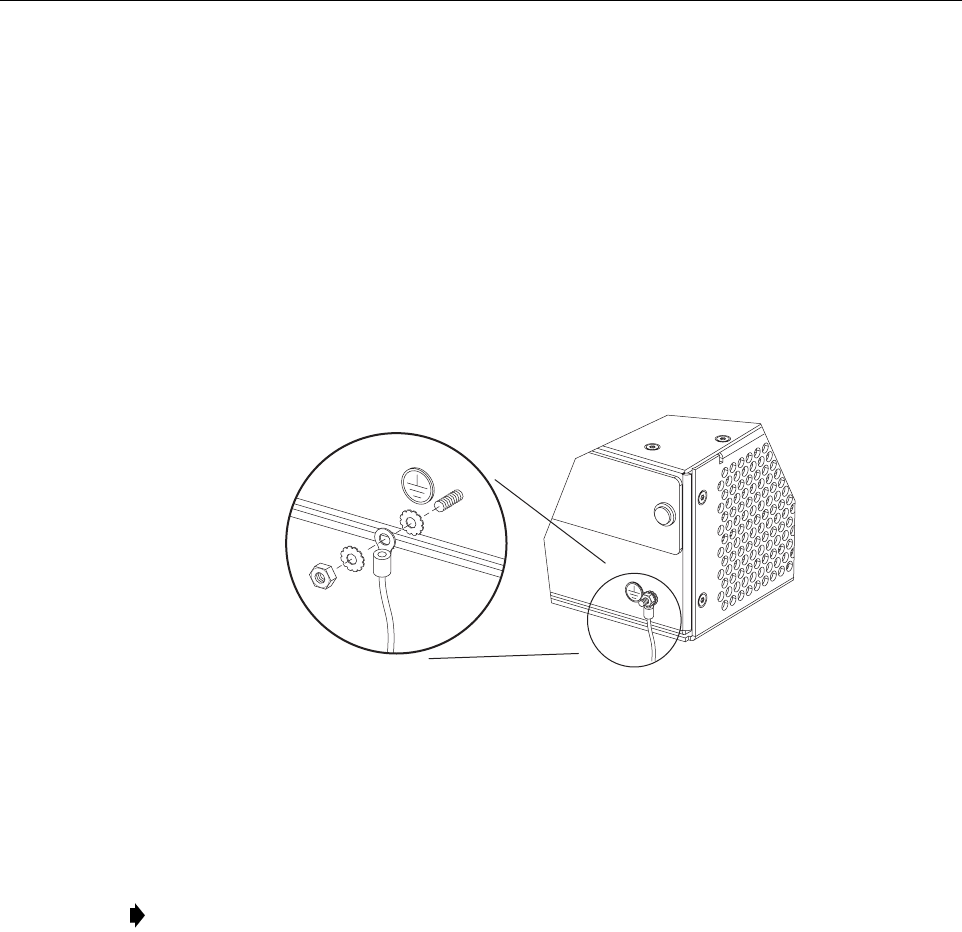
ADCP-75-169 • Issue 1 • June 2004
Page 12
© 2004, ADC Telecommunications, Inc.
4.5 Chassis Ground Connection
A stud is provided on the rear side of the chassis for connecting a grounding wire to the chassis.
Use the following procedure to connect the grounding wire to the chassis and to route the
grounding wire to an approved earth ground source.
1. Obtain a length of #18 AWG (1.00 mm) insulated stranded copper wire for use as a
chassis grounding wire.
2. Terminate one end of the wire with a ring terminal.
3. Locate the chassis ground stud at the rear of the HU as shown in Figure 11.
4. Attach the ring end of the wire to the chassis ground stud (see Figure 11).
Figure 11. Chassis Ground Stud
5. Route the free end of the chassis grounding wire to an approved (per local code or
practice) earth ground source.
6. Cut the chassis grounding wire to length and connect it to the approved ground source as
required by local code or practice.
4.6 Coaxial Cable Connections
The RF interface between the HU and the EBTS is supported through either two (non-diversity)
or three (diversity) type N female connectors mounted on the HU rear panel. On non-diversity
units, one connector provides the coaxial cable connection for the forward path (downlink)
signal and the other connector provides the coaxial cable connection for the reverse path
(uplink) signal. On diversity units, a third connector provides the coaxial cable connection for
the diversity reverse path (uplink) signal.
In most installations, it is usually necessary to insert an external attenuator into the forward
path link between the HU and the EBTS. A signal level that is greater than –9 dBm will
overdrive and possibly damage the HU receiver. Before completing the forward path connection
at the EBTS, verify that the composite forward path RF signal level at the HU is between –9
Note: Be sure to maintain reliable grounding. Pay particular attention to ground source
connections.
17866-A



